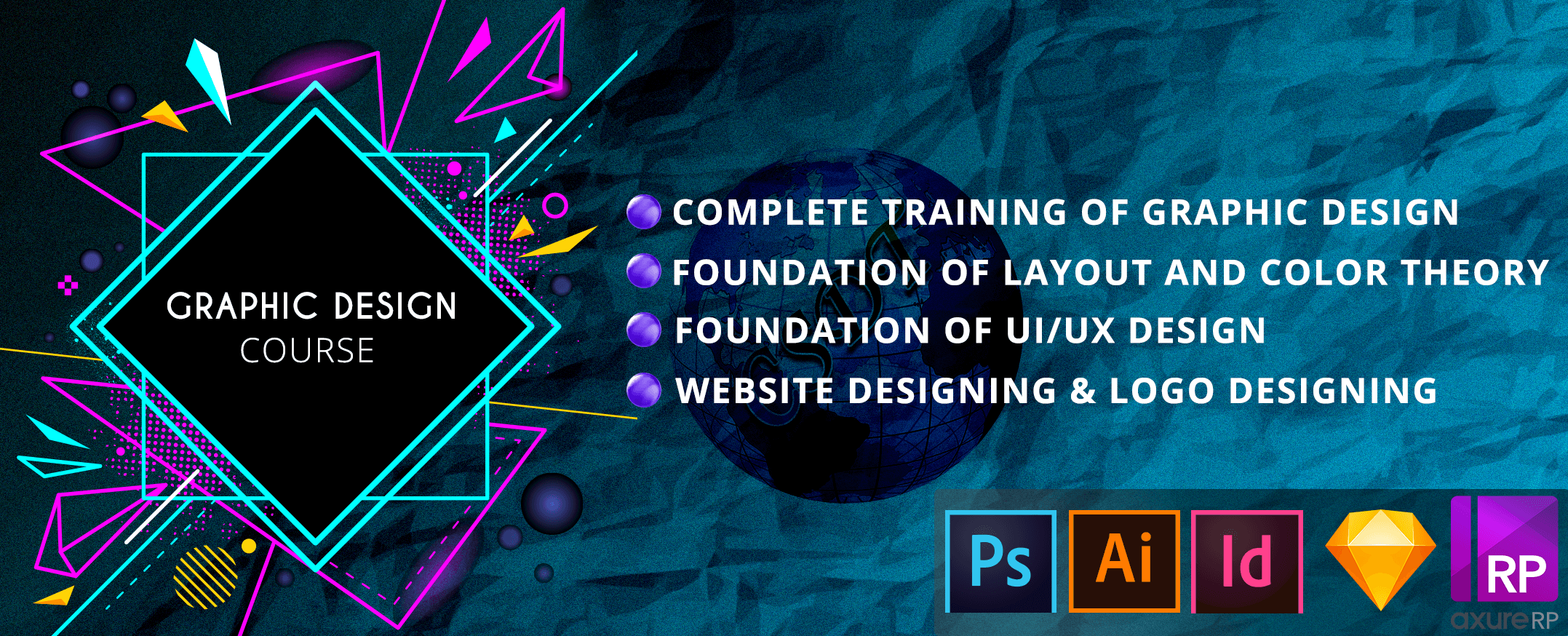Graphic Designing Training in Dubai
Graphic Design Training
The two most important things for a graphic designer to have are the artistic talent, which of course you're either born with or you're not, and a strong work ethic, something that will drive him or her to work as long as it takes to make sure that a project comes out exactly right. However, Graphic Design Training is another important asset for any designer. After all, there's a lot more to the job than simply creating beautiful works of art.
When you receive formal graphic training, you'll learn all of the business aspects of graphic design (it IS a business, after all). That is, you'll learn how to communicate with clients, how to arrive at a suitable budget and then stick to that budget, how to market yourself and/or your firm so that clients and customers will come knocking at your door, and you'll learn all about how to protect yourself legally. What's more, you'll also learn all the critical technical aspects of the job. You'll learn how to create websites, computer animation, sophisticated computer graphics, and how to upload your creations onto various online and mobile platforms.
When you apply to a Graphic Design Training program, you have to decide if you want an associate's degree, which takes two or three years to earn, or a bachelor's degree, which takes four years. You can get jobs with an associate's degree, but most higher-level design positions, those involving leadership, and management in addition to creating artwork, require a bachelor's degree. In order to gain acceptance into an accredited design program, you'll need to finish high school or pass the GED exam, and you'll need to be able to show off your artistic talent through a portfolio of your sketches, paintings, and drawings. Some schools require that you also complete at least one year of basic art training, whether you took those classes in high school or privately on your own time.
Your roster of courses at a design college will involve both technical courses and liberal arts courses. The technical aspect of your formal education will teach you how to use all sorts of tools-paints, computers software, and so on and you'll learn how to create graphics to meet various specifications. You'll also learn about various printing methods. The liberal arts courses will include such subjects as psychology, history, and culture. When you learn about fundamental human emotions and passions, you'll learn how to create works of art that really move people and inspire them to action. (Of course, the action you generally want to inspire is purchasing a certain product, but still....) It's only when you understand what really makes people tick that you can truly please and provoke them. You'll round out all these studies with business and marketing courses that will give you an edge when it comes to finding a job, selling your products and services as a freelancer, and managing a firm of graphic designers.
The two most important things for a graphic designer to have are the artistic talent, which of course you're either born with or you're not, and a strong work ethic, something that will drive him or her to work as long as it takes to make sure that a project comes out exactly right. However, Graphic Design Training is another important asset for any designer. After all, there's a lot more to the job than simply creating beautiful works of art.
When you receive formal graphic training, you'll learn all of the business aspects of graphic design (it IS a business, after all). That is, you'll learn how to communicate with clients, how to arrive at a suitable budget and then stick to that budget, how to market yourself and/or your firm so that clients and customers will come knocking at your door, and you'll learn all about how to protect yourself legally. What's more, you'll also learn all the critical technical aspects of the job. You'll learn how to create websites, computer animation, sophisticated computer graphics, and how to upload your creations onto various online and mobile platforms.
When you apply to a Graphic Design Training program, you have to decide if you want an associate's degree, which takes two or three years to earn, or a bachelor's degree, which takes four years. You can get jobs with an associate's degree, but most higher-level design positions, those involving leadership, and management in addition to creating artwork, require a bachelor's degree. In order to gain acceptance into an accredited design program, you'll need to finish high school or pass the GED exam, and you'll need to be able to show off your artistic talent through a portfolio of your sketches, paintings, and drawings. Some schools require that you also complete at least one year of basic art training, whether you took those classes in high school or privately on your own time.
Your roster of courses at a design college will involve both technical courses and liberal arts courses. The technical aspect of your formal education will teach you how to use all sorts of tools-paints, computers software, and so on and you'll learn how to create graphics to meet various specifications. You'll also learn about various printing methods. The liberal arts courses will include such subjects as psychology, history, and culture. When you learn about fundamental human emotions and passions, you'll learn how to create works of art that really move people and inspire them to action. (Of course, the action you generally want to inspire is purchasing a certain product, but still....) It's only when you understand what really makes people tick that you can truly please and provoke them. You'll round out all these studies with business and marketing courses that will give you an edge when it comes to finding a job, selling your products and services as a freelancer, and managing a firm of graphic designers.

Comments
Post a Comment